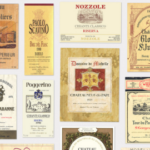If you’re a wine lover, one of the most exciting parts of a dinner out can be trying a new dish and sampling a few ideal wines chosen specifically for the way they enhance the flavor of the food. Unfortunately, when you’re cooking at home, you don’t have the luxury of a dedicated sommelier to help you choose the right wine for the food you’ve made. However, these basic guidelines will help you achieve similar results on your own.
Step 1—Find the Basic Taste Components
While there are many different taste components found in food and wine, you only need to focus on the six most basic when it comes to pairing the two:
- Food contains components of acid, fat, salt, sweet, bitter, and spice. Identify the tastes in your dish and simplify it to the two or three most dominant. For example, pasta with sausage and red sauce has strong fat, acid, and spice components, while a green salad with shrimp has acid, bitter, and fat components.
- Wine contains just three components of acid, sweet, and bitter. Red wines tend to be more bitter, while whites have more acidity. Meanwhile, sweet wines have dominating sweet components.
In addition, you’ll need to consider intensity. Is your food light in intensity, very rich in fats, or high in acids? Are the wines you have on hand light in body, very acidic, or high in tannins and bitterness?
Step 2—Determine if You Want a Complementary or Congruent Pairing
Complementary pairings consider your food’s different flavor components and play against them with contrasting components of the wine. Congruent pairings play up the flavor components of your food with similar components in the wine. Both balance the food and wine on the palate, just in different ways.
For example, a high-acid white wine is a complementary pairing for a rich, cheesy dish like a grilled cheese sandwich or pasta with hollandaise or alfredo because the acid balances out the salt and fat. A congruent pairing for the same dish would be a much creamier white wine like a chardonnay. In general, red wines are more likely to create congruent pairings, while whites create complementary pairings.
Step 3—Use Our Cheat Sheet
If you have your doubts about the complementary and congruent flavors among your dishes and the wines you have to choose from, this quick cheat sheet can help you decide. In general:
- Choose a wine that is sweeter and more acidic than the food
- Choose a wine with a similar flavor intensity as your food
- Pair wines based on the flavors of the sauce versus the meat or pasta
- Absent a sauce, try these general meat/wine rules:
- Red wines pair well with boldly seasoned red meats
- White wines pair well with fish or chicken
The best part about wine pairing, however, is the freedom you have to break the rules. If your favorite wine is a bitter, high-tannin Cabernet Sauvignon, pairing it with a delicate seafood dish is completely acceptable so long as you enjoy it. For more information about the many varietals of wine, you can find at Payless Liquors, ask one of our trained staff. Alternatively, reserve your favorite bottle today via our online order form.
Resources:
https://winefolly.com/wine-pairing/getting-started-with-food-and-wine-pairing/
https://www.foodandwine.com/wine/15-rules-great-wine-and-food-pairings












